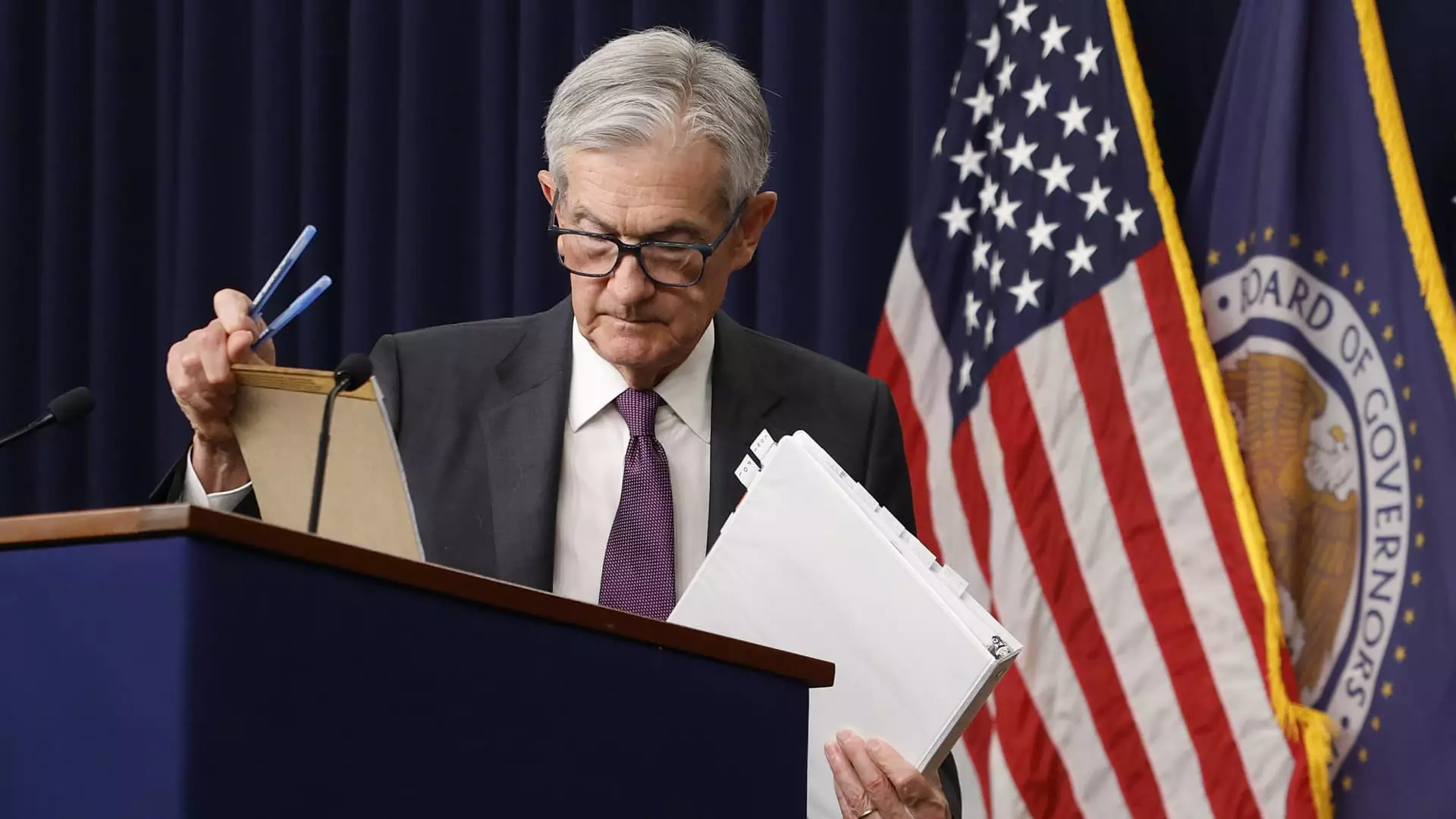The Federal Reserve, under the astute leadership of Chair Jerome Powell, finds itself navigating treacherous waters. As Powell articulated in a recent address, there looms a stark dilemma: balancing the twin objectives of curbing inflation while fostering economic growth. This dual mandate, which historically served as a compass for the Fed’s policy direction, now appears increasingly misaligned, particularly in light of the unpredictable dynamics introduced by President Trump’s tariffs. It’s a precarious situation, and Powell’s cautious tone underscores the tough terrain ahead. The question isn’t merely about how to operate within these confines—it’s whether the very premise of those goals needs reevaluating.
The looming specter of inflation, exacerbated by tariff impositions, poses a significant threat not just to prices, but to the overall economic landscape. Every tariff can be perceived not just as a tax on imports, but as a potential chokehold on domestic consumer spending. Powell’s acknowledgment that the Fed may find itself caught between these competing interests highlights a fundamental shift in the narrative surrounding economic policy. The ramifications could be severe, as the decisions made today could dictate the trajectory of economic recovery and stability for years to come.
Impact of Tariffs: A One-Time Exacerbation or Persistent Burden?
The complexity of tariffs in the current economic climate cannot be overstated. Powell’s assertion that these could serve as a one-time shock to prices is an oversimplification that ignores the potential long-term consequences. Tariffs are more than just an immediate spike—they mold expectations and behavior in ways that can linger long after their implementation. By potentially altering consumer habits, they risk embedding inflationary pressures into the economy that may be challenging to eradicate.
This metabolic change in the economy has wider implications. As companies adjust to these tariffs, the resulting prices may not merely reflect a fleeting bout with inflation but could lead to a new normal that consumers may be compelled to accept. The predictions of a 2.6% inflation rate, along with the requisite Fed measures aimed at suppressing demand, spark fears of a vicious cycle where inflation begets further inflation, significantly complicating the Fed’s role as a stabilizing force.
Growth Projections: A Cautionary Tale
As Powell indicated, the Federal Reserve’s focus has now shifted to the troubling signs of economic deceleration. With the GDP growth forecast for the first quarter on the brink of stagnation, juxtaposed against the backdrop of positive retail sales data, we’re left with a puzzling picture. The apparent contradiction between soaring car sales—driven by panic buying before tariff implementation—and lower overall consumer spending suggests a frail economic ecosystem vulnerable to shocks.
The growth narrative is fragile, and Powell’s acknowledgment of this precarious position only adds weight to concerns that we may be on the brink of an economic pivot. While on the surface, data points might suggest resilience, deeper analysis reveals underlying frailty. There is an unsettling notion that the feedback loops created by tariffs and rising costs could ultimately stifle the consumer spending upon which economic vitality heavily relies.
Interest Rates: A Tug-of-War with Market Sentiment
Powell’s reluctance to commit to a specific path for interest rates further complicates matters. The markets are anxiously speculating adjustments, hoping for rate cuts to ease consumer strain. However, should inflation ratchet up, the Fed’s hands could be tied, forcing it to act conservatively. This tension creates a significant schism between market expectations and real economic conditions. While the Fed may seek to wait for clarity, the perpetual uncertainty breeds volatility, rendering the risk of misalignment between economic indicators and policy responses a pressing concern.
The notion of maintaining inflation expectations becomes even more critical in this scenario. If consumers and businesses anticipate higher prices, their behaviors may shift preemptively, potentially anchoring inflation more firmly in the economy. This self-fulfilling prophecy could spell disaster, as it would require ruthlessly stringent measures from the Fed to recalibrate expectations—measures that could adversely impact growth trajectories.
The Road Ahead: A Call for Pragmatic Adaptation
The period ahead is fraught with uncertainty, demanding innovative thinking and adaptive policies. Relying on traditional models may not suffice in addressing the complex interplay between inflation and growth. The repercussions of tariffs, inflation pressures, and growth stagnation illuminate the need for a more nuanced economic framework, one that acts decisively without sacrificing the Fed’s dual mandate.
Amidst these challenges, it remains essential that we collectively recognize the gravity of the moment. Understanding the intricate relationship between policymaking and economic realities is critical, as the decisions made today will resonate for generations. As Powell and the Fed find themselves grappling with this unprecedented dilemma, the stakes have never been higher. It’s time for a recalibration—one that resonates with the challenges of the 21st century and embraces a more holistic approach to economic health.

